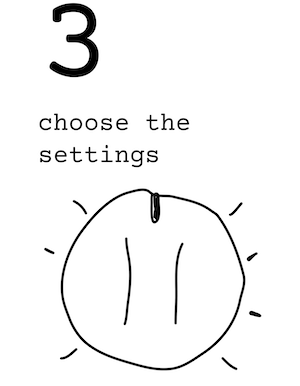Stage 3: choose the settings
This stage has three connected parts:
What’s on the box? project name, Dialling it in set the cycle length and Setting the sliders.
The purpose is to build on the 2.2: get it on the garments to help think about the projects further. It enables discussion about the purpose of engagement or scicomm for a specific research project (under the meta-purposes discussed in 2.1: scicomm 101) and where it fits in a research project.
In some parts of this stage we are thinking about the actual science or research project the scientist-communicators are hoping to engage about, as well as the engagement part that is being developed in the laundromat.
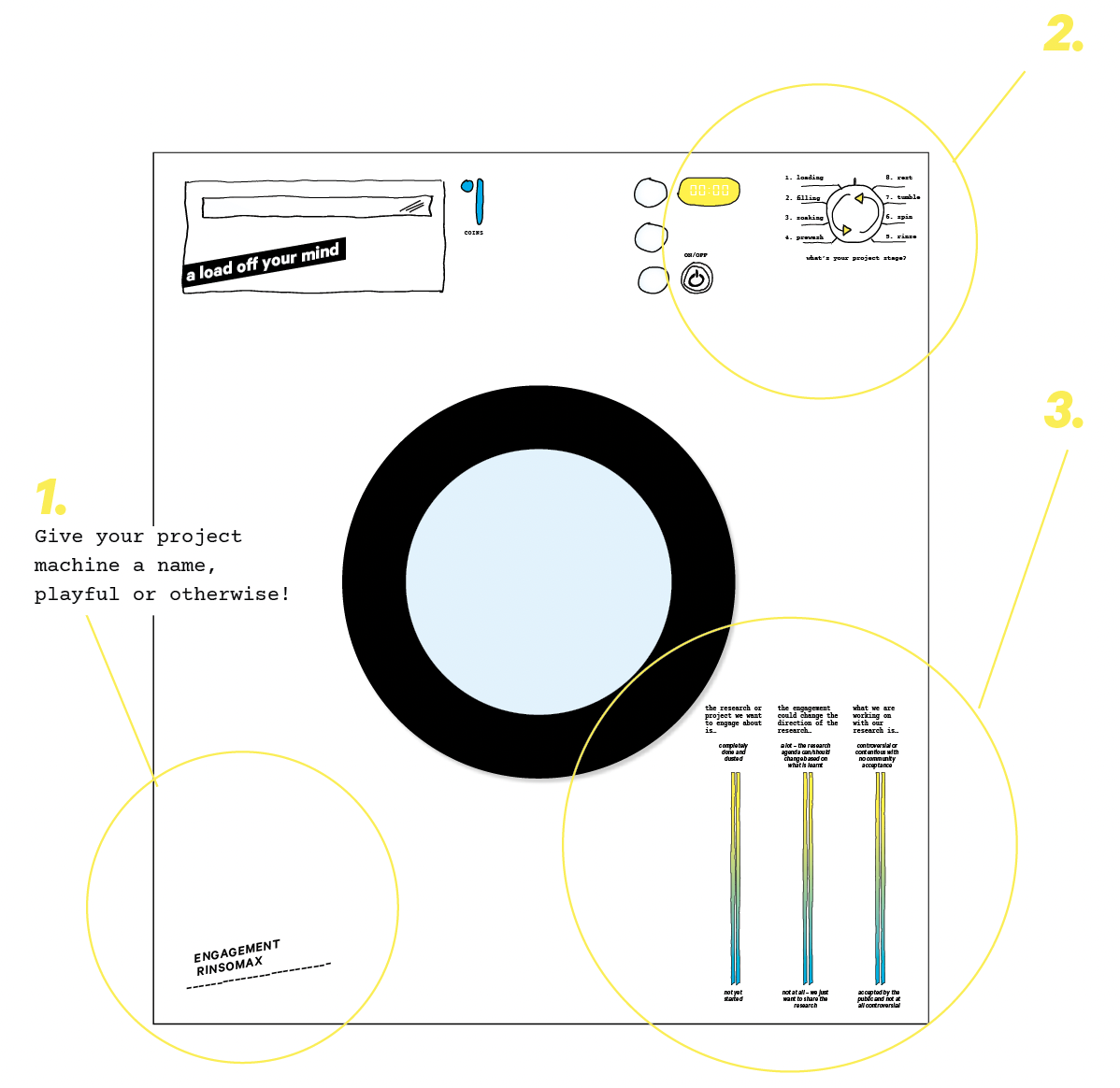
The location of stage 3 exercises on the washing machine front
WHAT IS ‘what’s on the box?’ project/washing machine name
In the zine workbook and on the washing machine, the first step here is to give the machine/project a working title. This should have been discussed thoroughly in 2.2: get it on the garments so is just a case of writing it onto the dotted line.
However, in our initial laundromats, we gave the washing machines funny names based on the content of the project, like ‘RinsoMaths 1000’ (mathematical concepts); Pestbuster Wonderspin’ (pest eradication); ‘Equity Tubthumper 2000’ (equity, diversity and inclusion in STEM); ‘Cold-power Dynamo’ (antarctic science) and ‘Healthomatic Express 400’ (healthcare systems). You could pun it up here too.
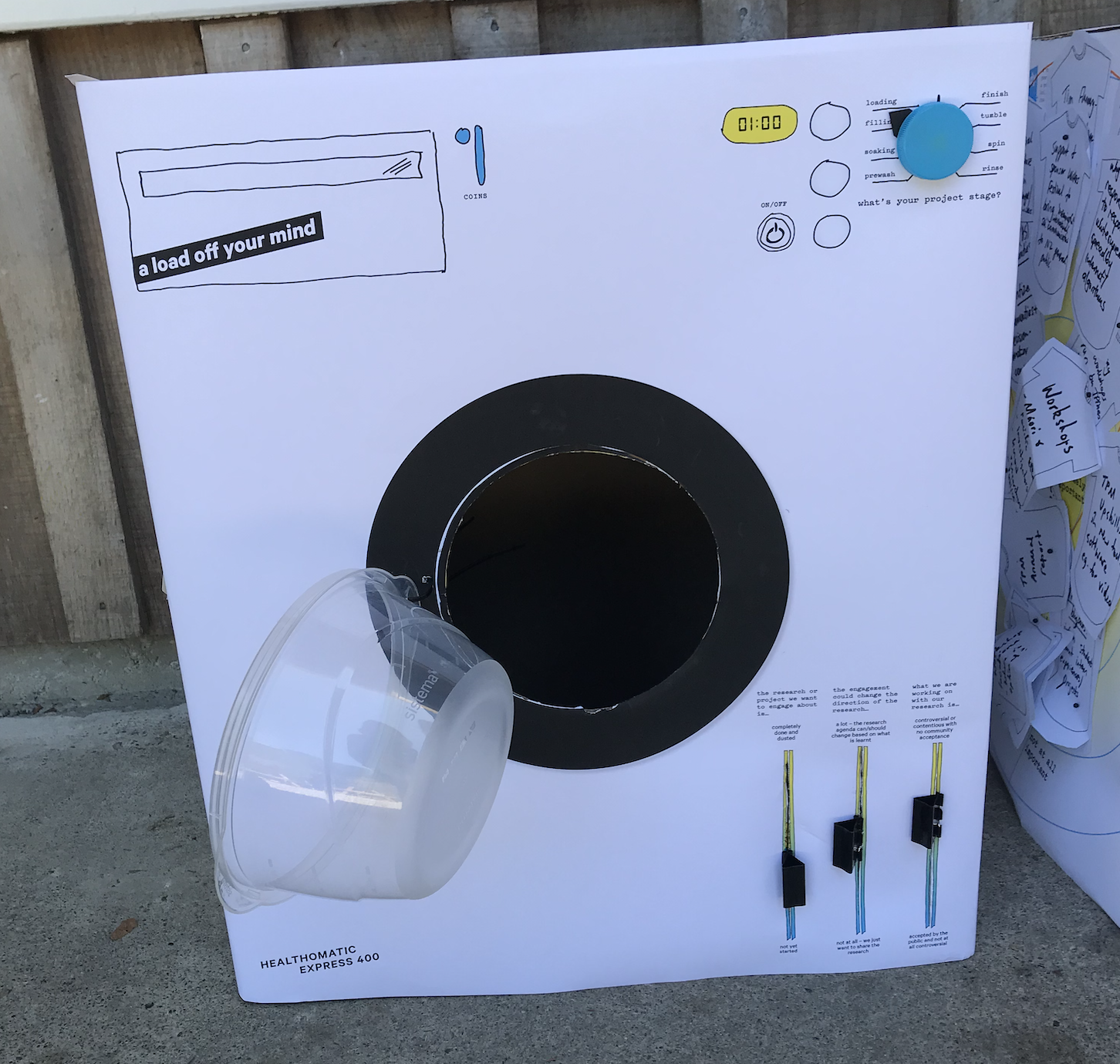
The Healthomatic Express
WHAT IS ‘DIALLING IT IN’ project cycle stage and length?
Setting the dial reflects on the stage the engagement project is at (some people might be using the laundromat as a catalyst, some might be checking in and reevaluating – both are legitimate). It also asks how long they expect an engagement cycle to take. This stage can be a brief conversation (noting that you might move, for instance from steps 1 to 2 during the laundromat), and also if you have physical washing machines, it’s a moment to feel the materiality of the bottle top, which brings levity and playfulness to proceedings!
In the zine workbook, it looks like this:
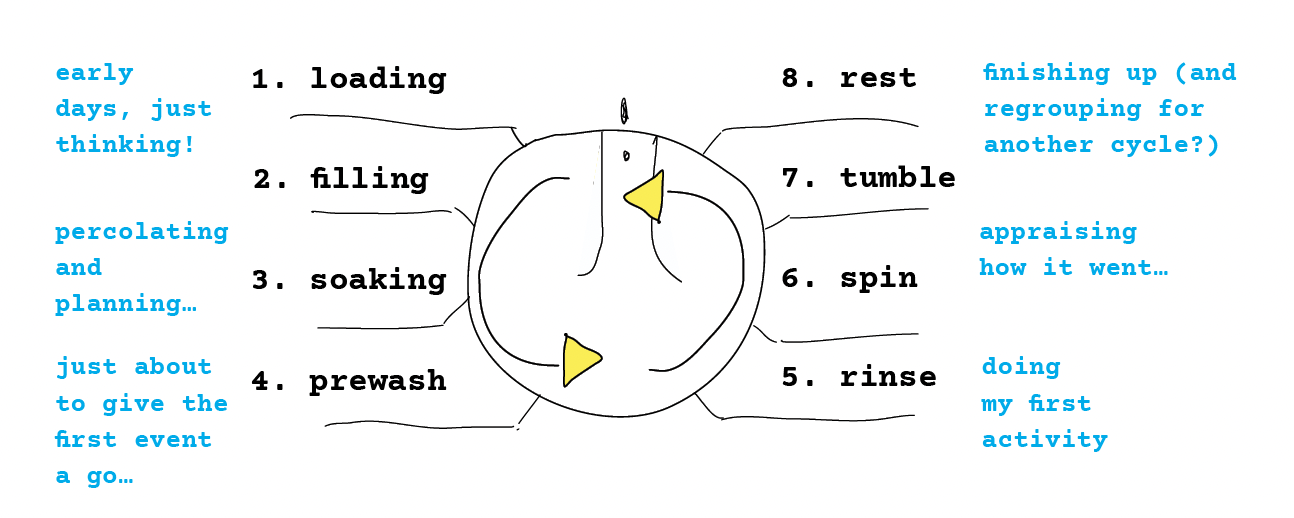
WHAT IS ‘Setting the sliders’?
‘Setting the sliders’ is a tool to help think about if the engagement or scicomm is upstream or downstream of the research, and about the controversy level of the topic.
By upstream, we mean ‘engaging public(s) in earlier stages of research and development rather than at later stages’ (Parliamentary Office of Science and Technology, 2006), so ‘downstream’ means after the research has taken place.
The first slider says: ‘the research or project we want to engage about is…’ and has poles marked ‘completely done and dusted’ to ‘not started yet’. The second says: ‘the engagement could change the direction of the research…’ with a slider from ‘a lot – the research agenda can/should change based on what is learnt’, to ‘not at all – we just want to share the research‘. In the 2.1: scicomm 101 parlance, ‘knowledge transfer’ (Stocklmayer, 2003) will by its nature be downstream, so there is no scope for any scicomm to change the research. ‘Knowledge sharing’ could relate to research-in-progress, and public engagement could potentially change the shape of the research, but probably won’t. ‘Knowledge building’ should take place at a point at which the research hasn’t been done, perhaps because social licence is not yet established. This kind of engagement needs to be upstream of the research.
These factors will vary depending on if an engagement project going through the laundromat is about a specific project, general disciplinary communication, or if it is a specific moment within a larger project. The point is simply to talk about it, about the value and potential of research moving upstream, and how they would approach this in the future.
The third slider is about social licence. It says: ‘what we are working on with our research is…’ and has poles marked ‘controversial or contentious with no community acceptance’ on one end, and ‘accepted by the public and not at all controversial’. The ‘community’ and ‘public’ terms are used consciously to allow the conversation about who those groups might be. The potential interplay of this slider on the second one is the key discussion point, alongside if there are different views on this amongst the group. Some topics, for instance, pest eradication can seem clearly ‘good’, but even amongst a collection of scientists who understand the conservation value, there are myriad ethical discussions not far below the surface. It can be a useful reminder that the value of research in other audiences is never a given.
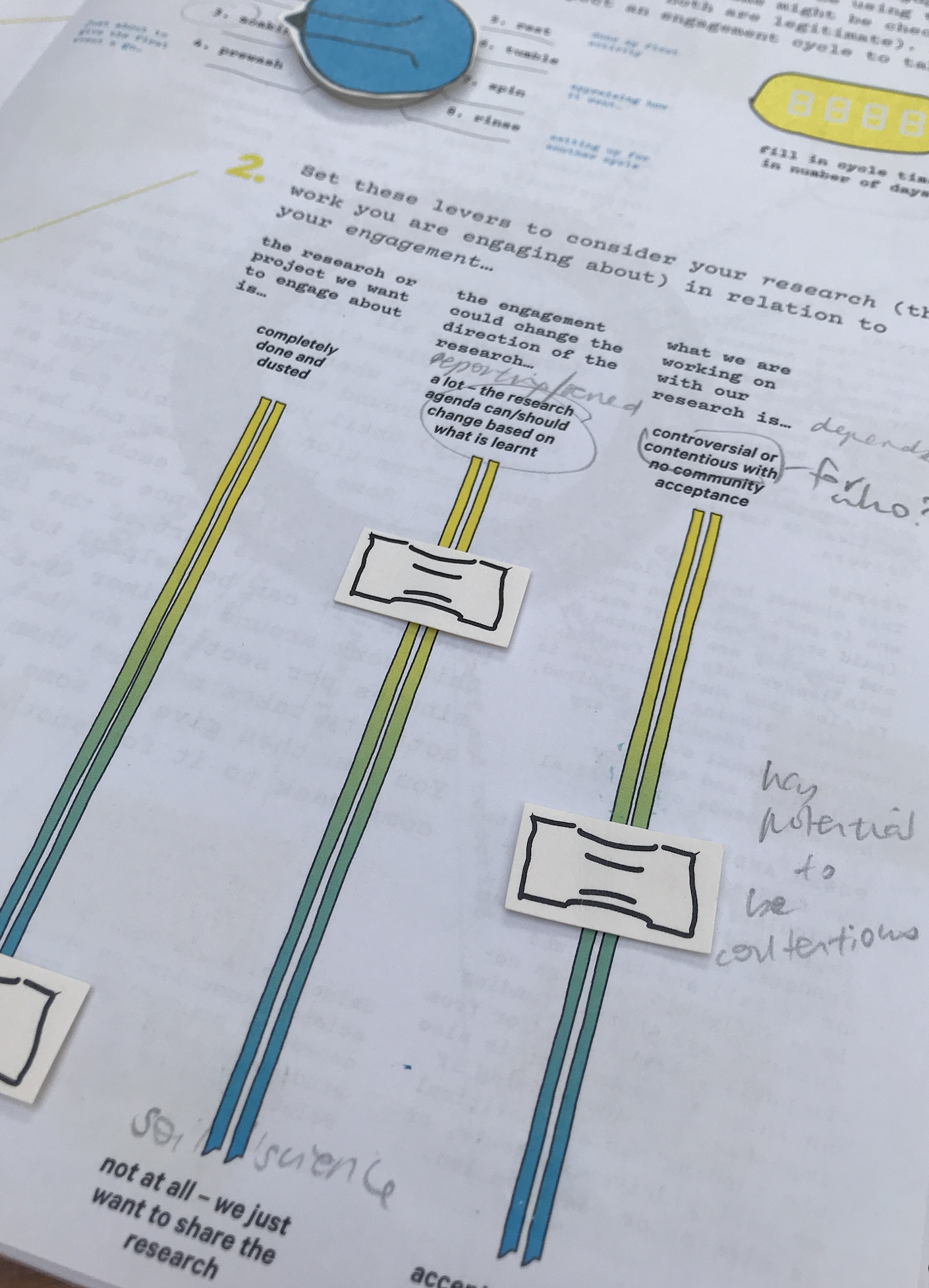
A completed zine workbook with moveable sliders
